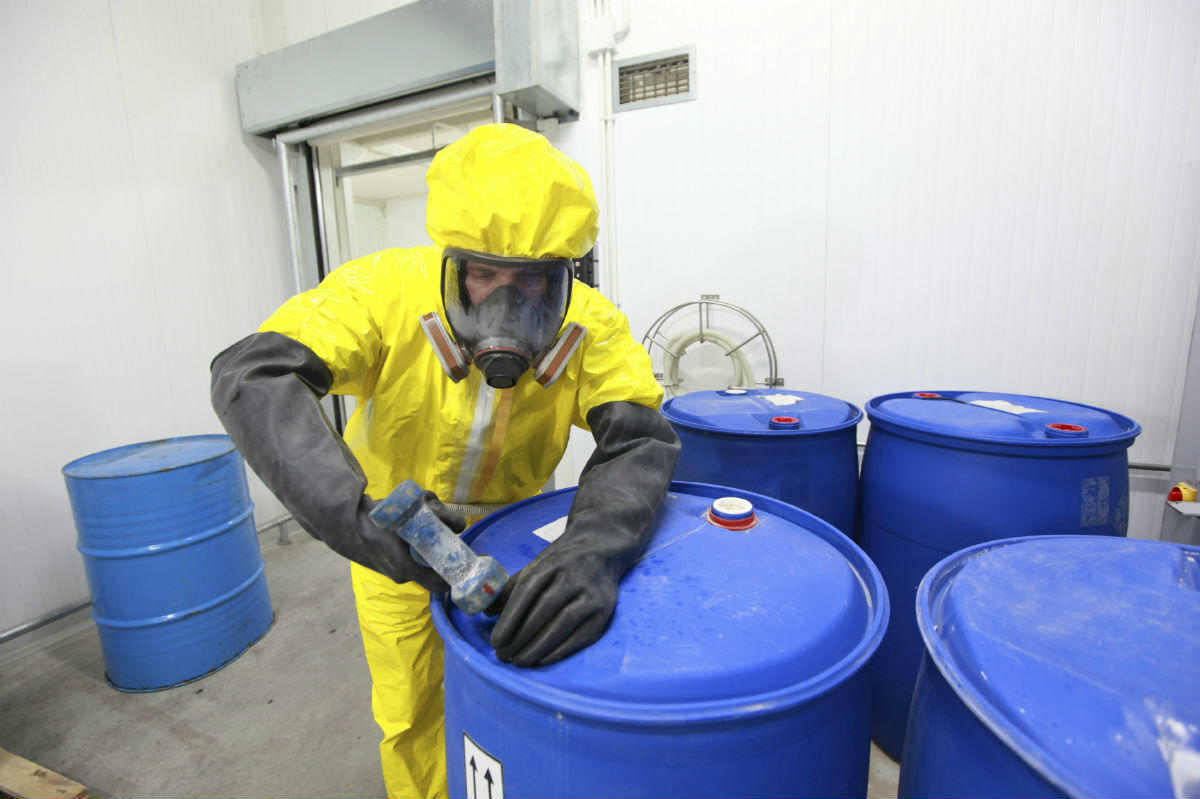Even though organizations like OSHA have made the workplace a much safer and healthier environment, chemical hazards still pose a serious risk to workers.

St. Louis workers that handle and work with toxic chemicals are more likely to suffer certain injuries due to exposure. One type of work-related injury that employees can suffer from is asphyxia from toxic chemicals. Asphyxiation or asphyxia is a term derived from Greek work that means to be without a heartbeat or pulse. It is a condition which is defined by an extreme decrease in oxygen concentration in the body. It is also accompanied by an increase in carbon monoxide concentration in the body. It results in the loss of consciousness and in worse cases, death.
If you have been injured at work due to chemical exposure, you should be receiving treatment for ALL of your injuries, not just the ones the insurance company wants to accept. Do not let the carrier deny you benefits.
What Can Cause Asphyxia?
There are a variety of circumstances that can lead to asphyxia. Generally, it is brought about by the inability of a person to get a sufficient amount of oxygen through breathing for a long period of time. Some conditions that can cause asphyxia to include:
- Constriction or obstruction of airways caused by asthma or laryngospasm
- Blockage from the presence of foreign materials in the environment
- Being present in an environment where oxygen levels are low
- Being in a vacuum or an environment where oxygen is not readily available
- Being in environments where oxygenated air is there but cannot be breathed because of contamination with foreign materials
Asphyxia from toxic chemicals is referred to as a type of illness or injury that a worker suffers in a workplace incident or accident. For example, a chemical spill at a factory can lead to asphyxiation due to exposure.
Types of Jobs With a High Risk of Exposure to Chemical Hazards
There are several types of jobs that have a high risk of asphyxia from toxic chemicals. Workers in the following occupations are at a higher risk:
- Workers responsible for operating an internal combustion engine without proper ventilation
- Working with toxic chemicals that can be spilled or released
- Working in confined spaces
- Workers who have to pump or agitate liquid manure or enter a manure pit
- Workers who have to enter a silo soon after it has been filled with silage
Common Injuries From Chemical Exposure in the Workplace
Asphyxia caused by exposure to toxic chemicals can lead to a variety of injuries including:
- Incoordination
- Convulsion
- Arrhythmia or irregular heartbeat
- Tachycardia or bradycardia
- Stupor
- Confusion
- Dizziness
- Coma
- Weakness
Workers Compensation for Work Injuries
Asphyxia from toxic chemicals is a serious condition that can even lead to death. If the worker survives, he may have to struggle with long term illness which may require extensive treatment.
At the Law Office of James M. Hoffmann, we have a strong history of helping workers that have been exposed to toxic chemicals in the workplace get the medical attention and financial compensation they and their family need.
Workplace Injury and Accident Causes
Asbestos Exposure
Asbestos Removal
Second Hand Asbestos Exposure
Sexual Assault Workplace
Physical Assault at Workplace
Workplace Injuries Assembly Line
At Fault Accident
Workplace Attack
Benzene Exposure
Injured on Lunch Break
Building Collapse
Workplace Bullying
Chemical Exposure in the Workplace
Chemical Hazards in the Workplace
Cold Stress in the Workplace
Combustible Dust Explosion
Computer Use
Construction Site Accident
Conveyor Belt Accident
On the Job Injury Cause by Coworker
Crane Accident
Injuries from Desk Jobs
Diesel Exhaust Fumes Exposure
Digging Injury
Breaking Company Policy
Drowning at Work
Workplace Drug Use
Electrical Workplace Accidents
Elevator Accident
Equipment Accident
Ergonomics in the Workplace
Excessive Overtime
Workplace Explosion
Extreme Danger
Fall at Work
Fire in the Workplace
Slicer Accident
Forklift Accident
Walk in Freezer
Gas Pipeline Accident
Hard Work
Workplace Hazardous Substances
Hazardous Equipment in the Workplace
Heavy Machinery Accident
Horseplay in the Workplace
Danger at Workplace
Insomnia in the Workplace
Jumping Accident
Ladder Falls at Work
Loading Dock Accident
Machinery Accident Workplace
Equipment Failure Accident
Mining Accident
Mold in the Workplace
Nail Gun Accident
Workplace Noise
Non Collision Accident
Heavy Objects
Workplace Office Equipment
Opioid Use
Injury at Work Due to OSHA Violation
Overexertion Injuries at Work
Use of Pain Killers
Power Tool Injury
Inadequate PPE
Repetitive Motion Injuries in the Workplace
Mansfield Bar
Scaffolding Accident
Secondhand Smoke in the Workplace
Side Effects
Silica Exposure
Sleep Disorder
Slip and Fall Injuries in the Workplace
Stairs at Work
Struck by a Vehicle
Tar Fumes
Toxic Chemical Exposure
Toxic Fumes in the Workplace
Car Accident While Working
Trench Collapse
Trips at Work
Unsafe Working Conditions
Workplace Violence
Welding Injury
Winter Hazards in the Workplace
Working Shifts
